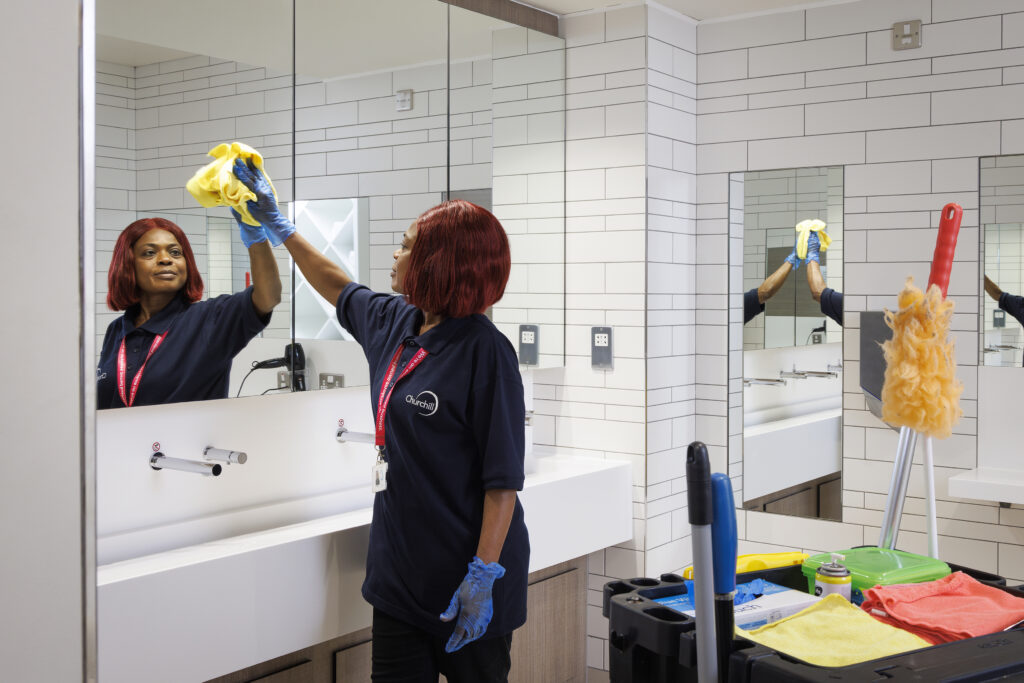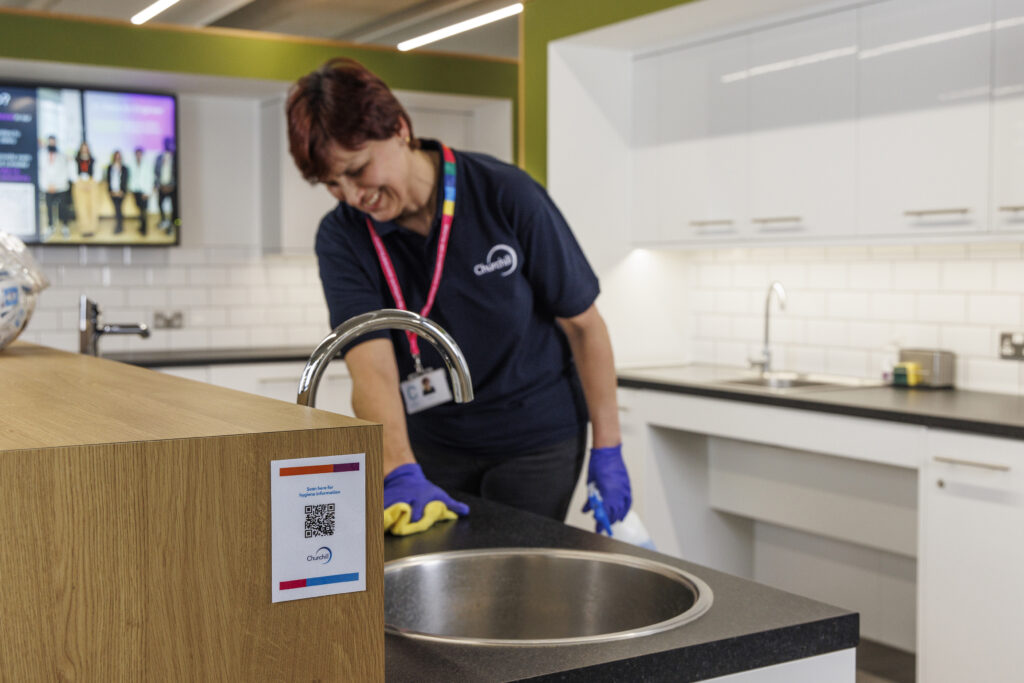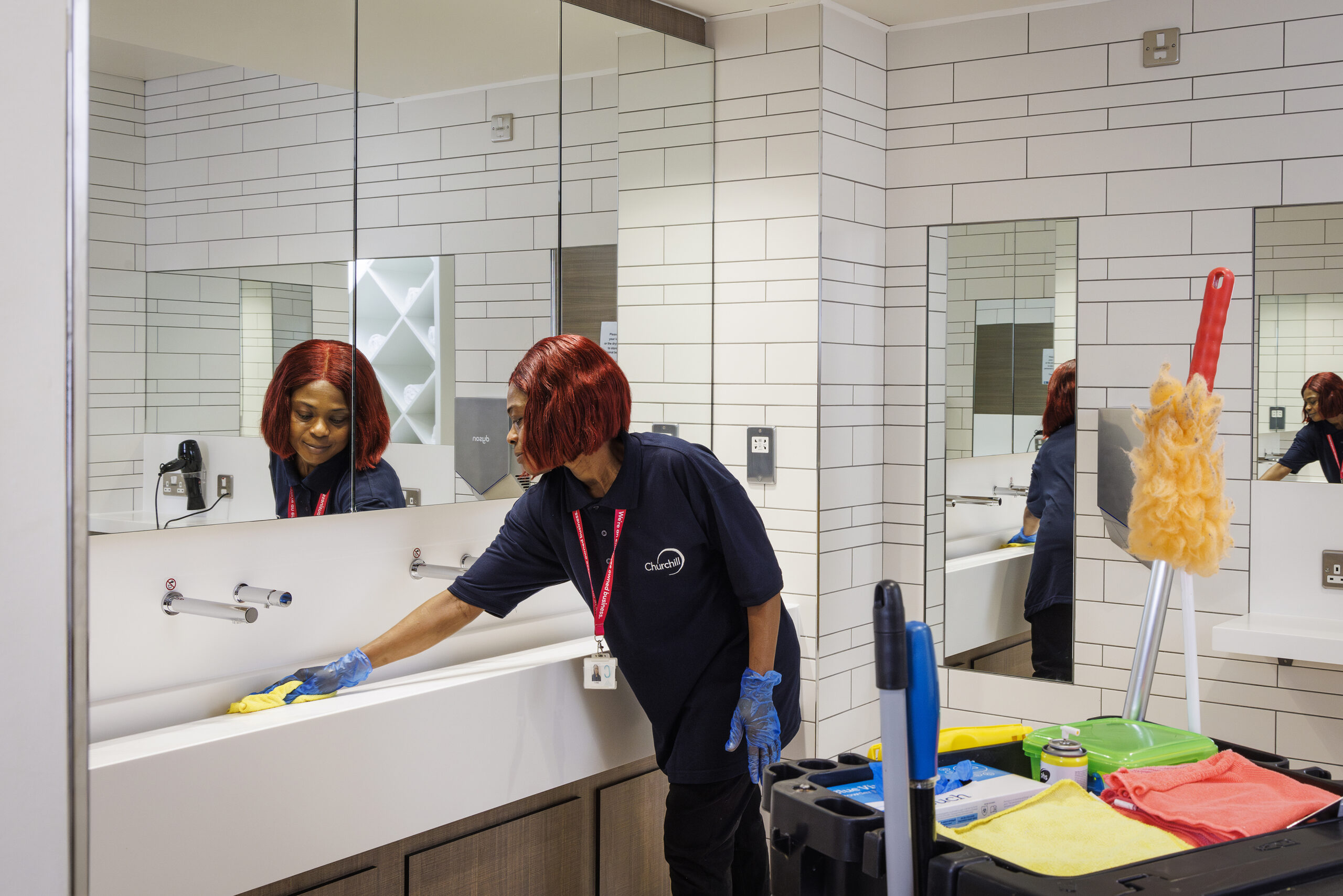We’re coming to the end of the school year, with some students preparing for their exams, while others are simply looking forward to the summer holidays.
School staff are probably also looking forward to the time off, but for some the hard work is about to begin—and that’s because the deep clean season is about to begin.
To ensure your school remains a pleasant environment for students and teachers alike, as well as compliant with your legal obligations when it comes to health and safety, it’s essential to get this right.
Let’s take a closer look at what’s involved, including what is sanitising, the difference between cleaning and sanitising, and what’s involved in an effective deep cleaning programme.
What is sanitising?
Sanitising is the process of reducing harmful bacteria on surfaces to safe levels, as defined by public health standards, but it goes beyond basic cleaning.
Sanitising involves the use of chemical agents or heat to target and kill microorganisms that might not be removed by cleaning alone. This is especially important in high-touch areas like kitchens, bathrooms and classrooms.
By effectively sanitising surfaces throughout the school environment, we help prevent the spread of illness and create safer, healthier environments for students, teachers and visitors. Our team is trained to follow strict protocols using tested products to ensure surfaces are not just visibly clean but hygienically safe. Whether it’s a daily routine or a targeted deep sanitisation, our approach is thorough, reliable and informed by current health guidelines.
The difference between cleaning and sanitising
Typically, ‘cleaning’ removes visible dirt, dust and debris from surfaces using soap, or detergent and water. It’s an important first step to improve appearance and remove surface-level germs, but it’s insufficient on its own to ensure a school environment is hygienic and safe. This is where sanitising comes in, which focuses on reducing bacteria to safe levels after cleaning. While cleaning makes things look clean, sanitising ensures they are hygienically safe, particularly in areas where health risks are higher.

Why deep cleaning matters in schools
Schools are high-traffic environments where students and teachers interact on a daily basis. With so many shared spaces and surfaces, it’s easy for bacteria and viruses to spread quickly, which is why regular cleaning routines play an essential role in maintaining general hygiene. However, they often don’t go far enough to tackle the build-up of grime and germs that accumulate over time.
Deep cleaning is a more intensive process that targets areas often missed during daily cleans, helping to eliminate hidden bacteria, remove ingrained dirt and restore a healthier, more hygienic environment for students and staff alike. This is especially important in places like classrooms, toilets, dining halls and changing rooms, where germs are most likely to multiply.
A clean learning environment doesn’t just support physical health, but it also contributes to improved concentration, reduced absenteeism and a more positive atmosphere. When schools invest in regular deep cleaning, they’re actively promoting wellbeing and safeguarding the entire school community.
When should a school schedule a deep clean?
The best time for a school deep clean is during holidays or half-term breaks, when buildings are empty and disruption will be kept to a minimum.
We’d also advise scheduling a deep clean after an outbreak of illness or before inspections, but remember that cleaning regularly throughout the year helps maintain high hygiene standards, ensuring the environment remains safe, welcoming and fit for learning all year round.
What’s involved in a professional school deep clean?
A professional school deep clean should involve a thorough, structured approach that targets hidden grime, bacteria and high-risk areas using commercial-grade equipment and approved cleaning agents.
The process typically begins with high-touch surfaces like door handles, light switches, desks and handrails—all of which can harbour harmful bacteria—while particular attention should be paid to high-risk zones such as toilets, kitchens, dining areas and changing rooms, where germs tend to accumulate fastest.
Floors should be deep cleaned using appropriate methods for the surface type, whether it’s carpet, tile or wood. Washrooms require full sanitisation, including behind and beneath fixtures. Internal windows, skirting boards, walls and ventilation grilles should also be addressed to remove dust and allergens that can impact air quality. Shared equipment such as keyboards, whiteboards and gym apparatus should be disinfected thoroughly to prevent cross-contamination.
Every school is different, so a professional deep clean should be tailored to the building’s layout, footfall and usage patterns. Done properly, it not only helps maintain a safe and hygienic environment but also preserves the condition of facilities and supports overall wellbeing across the school.

How long does a deep clean take?
The duration of a school deep clean depends on the size of the premises, the condition of the space and the scope of work required. It can also be impacted by the fabrics and finishes of what is being cleaned, particularly floors, as certain fabrics require more intensive cleaning than others.
For example, a small primary school might be completed in a day, while larger secondary schools or multi-building campuses can take several days to clean thoroughly, with high-traffic areas and specialist spaces like science labs or sports halls requiring extra time.
Bear in mind that a professional cleaning provider should carry out a site assessment in advance to give a clear and realistic timescale of when the cleaning can be completed.
Maintaining cleanliness between deep cleans
While deep cleaning is essential, maintaining hygiene in the meantime is just as important. A consistent daily cleaning routine helps prevent the build-up of dirt and bacteria, especially in high-touch areas like door handles, desks, toilets and shared equipment. Encouraging good hand hygiene among pupils and staff also plays an important role in reducing the spread of germs.
This ‘business as usual’ cleaning should follow a clear schedule that prioritises high-traffic zones, with regular checks to ensure desired and legally required standards are upheld across the school campus. By taking simple remedial action like wiping down surfaces after use or promptly reporting spills and damage, a significant difference can be made to the hygiene of the environment day-to-day, as well as to the amount of work that’s required once the time for a deep clean comes around again.
Need support? Contact Churchill Cleaning
There’s a lot involved with a school deep clean that can be hard to manage without professional support. Fortunately, the expert team here at Churchill Cleaning is on-hand, backed by over 25 years of experience in providing school cleaning services to educational establishments just like yours, including primary, secondary and tertiary education organisations. We’ve worked with over 500 education clients in that time, including the likes of Arts University Bournemouth, King’s College London and Lift Academy Trust, among others.
To find out more about how we can help ensure you uphold the required standards of hygiene in UK schools and colleges, get in touch with our knowledgeable team today.
